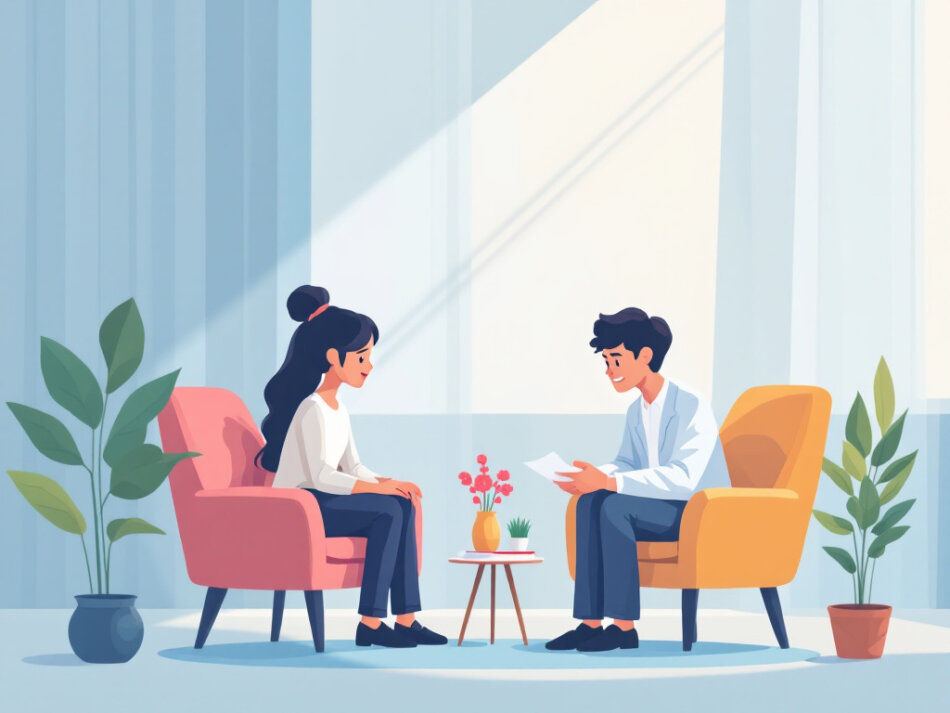When you’re exploring day treatment for teen depression and anxiety, you’re looking for a program that offers structured care beyond weekly therapy, but lets your child return home each evening. Day treatment programs, also called psychiatric day treatment or partial hospitalization, bridge the gap between outpatient therapy and full inpatient hospitalization. They deliver intensive support for emotional disorders in teens—combining individual therapy, group sessions, evidence-based modalities, and academic continuity—all under one roof.
By choosing day treatment for teen depression and anxiety, you give your child access to comprehensive services five to seven days per week. They’ll build coping skills in real time, receive medical oversight without overnight stays, and maintain connections with family and school. In this guide, you’ll learn what day treatment involves, how it compares to other levels of care, which therapeutic approaches are offered, what a typical day looks like, and how to evaluate programs that accept insurance.
Define day treatment
Program definition
Day treatment programs provide structured, intensive outpatient mental health care for teens with depression and anxiety. Operating four to eight hours daily, five to seven days per week, these programs deliver group therapy, individual counseling, family sessions, and psychiatric support without requiring overnight stays [1]. They’re designed to help adolescents practice coping strategies in a therapeutic community while returning home each evening.
Benefits and goals
Day treatment aims to:
- Stabilize mood and reduce acute symptoms of depression and anxiety
- Teach real-world coping skills in group and individual settings
- Offer peer support and reduce isolation
- Maintain academic progress through on-site or coordinated schooling
- Involve family members in treatment planning and skills coaching
A ten-year study at Kocaeli University showed significant improvements in functioning, anxiety, depression, and self-esteem among youth in day treatment. Overall functioning scores on the Children’s Global Assessment Scale rose from 55.96 at intake to 71.26 at discharge (p<0.001), while depression ratings fell from 21.25 to 12.08 and self-esteem climbed from 29.38 to 36.60 [2].
Who is suited for day treatment
Day treatment fits teens who:
- Have moderate to severe depression or anxiety not fully managed by outpatient therapy
- Require more support than weekly counseling but do not need 24/7 hospitalization
- Can function safely at home with family supervision
- Benefit from a structured, multi-disciplinary environment
- Need continued schooling or credit recovery during treatment
If your teen’s symptoms include persistent low mood, excessive worry, withdrawal from peers, or mood swings that disrupt daily life, a day treatment program may be the right step before considering residential therapy for teens with severe mood disorders.
Compare care levels
Inpatient vs day treatment
Inpatient hospitalization provides 24-hour medical and psychiatric supervision for acute crises, including severe self-harm risk or psychosis. Day treatment offers intensive therapy without overnight stays. Key differences:
| Level | Supervision | Length | Setting |
|---|---|---|---|
| Inpatient | 24/7 medical | Variable days | Hospital or psychiatric unit |
| Day treatment | Structured daytime care | 4–8 weeks | Clinic or university-affiliated center |
Residential vs day treatment
Residential programs provide a home-like environment with longer-term stays (30–90 days) focused on emotional growth, family work, and clinical support without continuous medical oversight [3]. Day treatment, by contrast, allows teens to sleep at home while benefiting from daily therapeutic routines.
Intensive outpatient vs day treatment
Adolescent intensive outpatient programs (IOPs) blend group therapy, family sessions, and education over three sessions per week, each lasting around three hours, typically for eight weeks [4]. Day treatment delivers more hours and days of care, making it ideal if your teen needs a higher level of support than an IOP.
Outline treatment approaches
Individual and group therapy
- Individual therapy addresses personal triggers, thought patterns, and goals.
- Group therapy builds social skills, peer support, and shared coping strategies.
- Some programs integrate psychoeducation groups on stress management, self-esteem, and emotion regulation.
These sessions help your teen develop self-awareness and practice skills in a safe environment, reinforcing progress between therapy and home life. You can learn more about specialized support in a program for teen emotional instability or therapy for anxious or withdrawn teens.
Evidence-based therapies
Cognitive behavioral therapy
CBT helps teens identify and challenge negative thoughts contributing to depression or anxiety. By replacing unhelpful beliefs with balanced thinking, your teen learns healthier coping skills. Many day treatment programs feature CBT modules in both individual and group formats. For deeper insights, see cbt and dbt therapy for teens.
Dialectical behavior therapy
DBT includes mindfulness, distress tolerance, emotion regulation, and interpersonal effectiveness modules. It’s especially effective for teens with intense mood swings, self-harm behaviors, or borderline traits. Day treatment settings enable real-time practice of DBT skills under clinician guidance.
Family-based therapy
Involving parents and siblings in therapy improves communication, boundary setting, and relapse prevention. Family sessions may cover conflict resolution, healthy support strategies, and how to reinforce skills at home. This collaborative approach enhances treatment gains and fosters a supportive environment.
Describe program structure
Daily schedule overview
A typical day treatment schedule might include:
- Morning check-in and symptom monitoring
- Individual therapy session
- CBT or DBT skills group
- Lunch with social reinforcement activities
- Academic support or tutoring
- Peer support group focused on anxiety and mood challenges
- Family therapy or parent group at day’s end
Multidisciplinary team
Your teen will work with:
- Psychiatrists or psychiatric nurse practitioners for medication evaluation
- Licensed therapists specializing in adolescent mood disorders
- Social workers and case managers coordinating care
- Education specialists ensuring academic progress
- Occupational therapists for life skills and recreational activities [5]
Academic support
Many day treatment programs include on-site schooling or coordinate with your teen’s home school to maintain credits. For teens balancing mental health care and academic demands, programs like the Teenscope Day Treatment Program offer accredited education to facilitate a smooth transition back to the classroom.
Evaluate program options
Assess teen needs
Begin by identifying your teen’s primary challenges—depression, anxiety, mood swings, perfectionism, or co-occurring disorders. Consider programs tailored to specific concerns, such as a program for teen anxiety and stress, teen therapy for mood swings and irritability, or comprehensive anxiety and depression treatment for teens.
Verify insurance coverage
Day treatment can be covered by many insurance plans as “partial hospitalization.” Review your teen’s policy for mental health benefits, out-of-network options, and pre-authorization requirements. Programs often assist families in navigating insurance, ensuring you maximize benefits for depression treatment that accepts insurance and related services.
Tour prospective facilities
When visiting, ask about:
- Staff credentials and teen-to-staff ratios
- Typical group sizes and session lengths
- Family involvement protocols
- Transition planning back to outpatient care
- After-care and alumni support
A guided tour gives you insight into the environment, culture, and clinical philosophy.
Support teen at home
Maintain routines
Consistent sleep, meal, and homework schedules reinforce skills learned in day treatment. Keep a visible family calendar and involve your teen in planning.
Encourage communication
Set aside time each day to talk about progress and challenges. Validate feelings and celebrate small victories to boost motivation and self-esteem.
Plan for transition
Work with clinicians to develop a step-down plan—whether that’s moving to an IOP, outpatient therapy, or school-based support. Coordinate with your teen’s teachers and therapists to ensure continuity of care.
Next steps and resources
Choosing day treatment for teen depression and anxiety is a major decision, but with the right information and support, you can guide your child toward lasting recovery. Start by evaluating your teen’s needs, verifying insurance coverage, and touring programs that fit your family. For additional resources on adolescent mental health, explore our teen depression treatment and teen mental health treatment for emotional balance pages.
If you’re facing a crisis, don’t hesitate to call the National Suicide Prevention Lifeline at 988 or your local crisis line. Your proactive steps today can make a profound difference in your teen’s journey toward emotional well-being.











